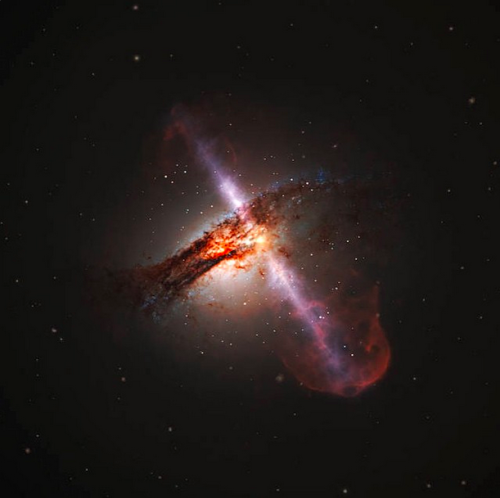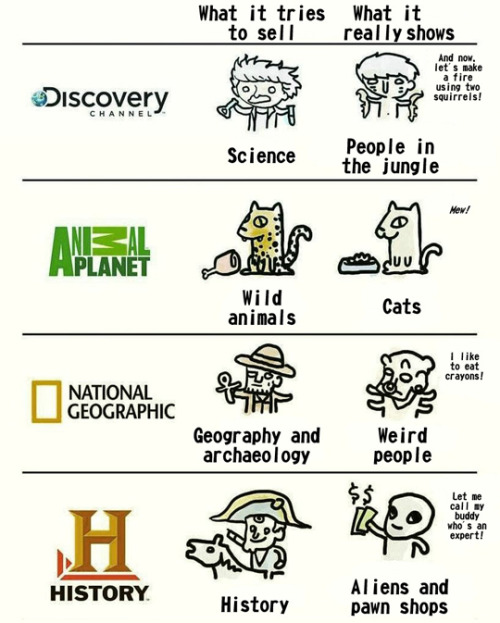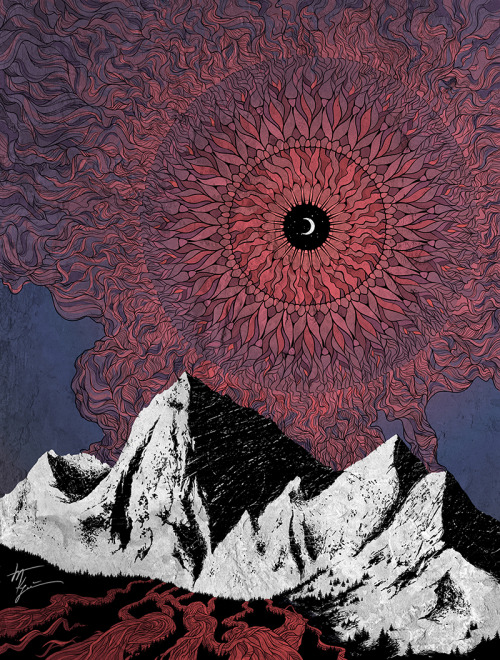Forever Yawning.

Forever yawning.
More Posts from Andromedasbitch-blog and Others

The two high-speed jets of plasma move almost at the speed of light and stream out in opposite directions at right angles to the disc of matter surrounding the black hole, extending thousands of light-years into space. NASA


Traveling across more than seven Midwestern states with a professional storm-chasing group, photographer Eric Meola documents everything from hair-raising tornadoes to serene sunsets in his project ‘Tornado Alley: The Sky Above the Land Below.’ While the deadly force of a storm can wreak havoc upon a community, he hopes his work reminds the safety-conscientious observer that there is another side to these storms. “You are miles away from the nearest town and you are looking at these beautiful, flat horizons with endless wheat fields, long roads and dramatic rolling hills,” Meola tells TIME. “Then in all of the peacefulness comes this angry sky that is almost exploding with energy and light, form and shape. Nature truly is beautiful.” Photograph by Eric Meola. Read more at lightbox.time.com and see a behind the scenes picture @timelightbox. http://ift.tt/1Kvla1j



Stellar Evolution: How Stars Die
Depending on their mass, stars follow one of three evolutionary routes. When they end their lives they may become white dwarves, neutron stars, or black holes.
All stars fuse hydrogen into helium at their core, releasing energy that balances the force of gravity that pulls inwards. Helium is denser than hydrogen, so as it is created, it makes the star’s core hotter and more pressurised. Eventually, the temperature is high enough to fuse the hydrogen around the core, and as fusion reactions happen faster and faster, the force released pushes away the outer layers of the star. Since the star’s radius increases, its energy radiates away over a larger surface area and it emits cooler red light. The star is now a red giant. When it reaches temperatures of 100 million Kelvin and begins to fuse helium into carbon and oxygen, it may take three paths depending on its initial mass.
In light stars like our sun, all their fuel will have run out before temperatures get hot enough to fuse carbon and oxygen into heavier elements. All the excess gas and dust is blown off by stellar wind, forming a planetary nebula, and eventually the star simply becomes a hot, dense carbon and oxygen core: a white dwarf. To take this evolutionary route, a star must be less than 1.4 times the mass of our own Sun, otherwise known as the “Chandrasekhar Limit”. When a star stops producing energy, the only thing stopping gravity from collapsing the star is electron degeneracy pressure: when electrons are squeezed together, they repel each other, thus resisting gravitational collapse.
A star more massive than the Chandrasekhar Limit will collapse even further. As a red giant, its temperatures will become high enough to fuse oxygen and carbon into heavier elements. Fusion continues on and on until iron is created—and since fusing iron uses up energy instead of creating it, fusion stops. Electron degeneracy pressure is the only thing stopping the star from collapsing, and then that gives in too. Electrons are squeezed into the nucleus of the atom, protons turn into neutrons, and the core of the star is soon just a super dense ball of neutrons. An enormous amount of energy is released in the collapse—material hurtles down towards the core and bounces off, creating an immense shockwave that blasts away the rest of the star in a supernova. It’s so bright and energetic that it can temporarily outshine an entire galaxy, and can fuse even heavier elements, like uranium and gold. After the explosion, all that’s left is a neutron star: a stellar corpse 1.5 to 3 times the mass of the sun, but compressed to the size of a city in Earth (30 km in diameter).
But if the original star is more than 20 times the mass of our sun, something even wackier will form at the end of its life: a black hole. It goes from red giant to supernova to neutron star—but it doesn’t stop collapsing. Instead of forming a ball of neutrons, the star’s mass is so great that it collapses down and down to a point so small it must have infinite density. This is called a singularity. To quote Sir Roger Penrose, ‘Thou shalt not have naked singularities’, meaning that they cannot exist with an accompanying event horizon. Anything that crosses beyond this horizon can’t escape the immense gravitational pull of the singularity, not even light. Together, a singularity and its event horizon form a stellar mass black hole.
Denser and denser and denser, the corpse of a star and the grave in which is rests depends largely on its mass. These are the endpoints of stellar evolution, and will be the eventual fate of every point of light we see when we look up.
(Image Credit: Wikimedia Commons and Universe Today)



Barris Custom “Hover Car”The XPAK 400

It’s Red, White and Blue stars month!
This week’s entry: Life of a star Part 2
http://www.schoolsobservatory.org.uk/astro/stars/lifecycle


Death and Rebirth
On July 4, 1054 A.D, a bright new star appeared in the sky. Although it was 6,500 light-years away from Earth, it shone brighter than whole galaxies and was visible in daylight for 23 days. Little did the astronomers of the day know, the “new” star was actually the violent death of an old star: a supernova explosion. Stars more than ten times the mass of our sun will eventually become supernovas when they die. For their whole lives, they battle to balance energy trying to get out and gravity trying to crush them in under their own weight—but when they run out of fuel to burn, gravity wins. The star’s core collapses and its very atoms are crushed, emitting an enormous shockwave that flings heavy elements out into space. The remnants of this particular supernova formed the enigmatic Crab Nebula, an energetic cloud spanning five light-years, with each different colour representing different chemicals: orange is hydrogen, red is nitrogen, green is oxygen… And at the centre of the nebula lies the remnant of the exploded star. Gravity has squashed all the empty space out of it, leaving an incredibly dense object called a neutron star—just 20 km across, but with the mass of our sun, so on Earth, one teaspoonful would weigh one billion tons. Rotating neutron stars are known as pulsars, and this one spins at a rate of 30 times per second, sending out violent jets of particles at nearly the speed of light.
(Image Credit: 1, 2)
-
 cleo7 liked this · 2 years ago
cleo7 liked this · 2 years ago -
 gabrielapoe-16 liked this · 4 years ago
gabrielapoe-16 liked this · 4 years ago -
 0verthinking1t liked this · 4 years ago
0verthinking1t liked this · 4 years ago -
 bewareof-all liked this · 5 years ago
bewareof-all liked this · 5 years ago -
 astrologyforestgirl liked this · 5 years ago
astrologyforestgirl liked this · 5 years ago -
 voltuja liked this · 5 years ago
voltuja liked this · 5 years ago -
 siriuslysenseless liked this · 5 years ago
siriuslysenseless liked this · 5 years ago -
 lanilou15 reblogged this · 5 years ago
lanilou15 reblogged this · 5 years ago -
 hidden-from liked this · 5 years ago
hidden-from liked this · 5 years ago -
 buggggggggggggggg liked this · 5 years ago
buggggggggggggggg liked this · 5 years ago -
 bluclouds9 liked this · 5 years ago
bluclouds9 liked this · 5 years ago -
 skullqween liked this · 5 years ago
skullqween liked this · 5 years ago -
 to-th6ndlessnight liked this · 5 years ago
to-th6ndlessnight liked this · 5 years ago -
 dead--end liked this · 5 years ago
dead--end liked this · 5 years ago -
 jimmyjampots reblogged this · 5 years ago
jimmyjampots reblogged this · 5 years ago -
 fokpingkuen liked this · 6 years ago
fokpingkuen liked this · 6 years ago -
 mshalsuu reblogged this · 6 years ago
mshalsuu reblogged this · 6 years ago -
 blvckvillvin reblogged this · 6 years ago
blvckvillvin reblogged this · 6 years ago -
 pdivy liked this · 6 years ago
pdivy liked this · 6 years ago -
 margvark liked this · 6 years ago
margvark liked this · 6 years ago -
 tales-of-meh reblogged this · 6 years ago
tales-of-meh reblogged this · 6 years ago -
 xgucciferx liked this · 6 years ago
xgucciferx liked this · 6 years ago -
 mydarlingrobotxoxo reblogged this · 7 years ago
mydarlingrobotxoxo reblogged this · 7 years ago -
 k-d-u-b-s reblogged this · 7 years ago
k-d-u-b-s reblogged this · 7 years ago -
 ogstrsh-blog reblogged this · 7 years ago
ogstrsh-blog reblogged this · 7 years ago -
 myheadisamess reblogged this · 7 years ago
myheadisamess reblogged this · 7 years ago -
 bespangeled reblogged this · 7 years ago
bespangeled reblogged this · 7 years ago -
 bespangeled liked this · 7 years ago
bespangeled liked this · 7 years ago -
 accrochage reblogged this · 7 years ago
accrochage reblogged this · 7 years ago -
 psnissenbaum reblogged this · 7 years ago
psnissenbaum reblogged this · 7 years ago -
 bnngls reblogged this · 7 years ago
bnngls reblogged this · 7 years ago -
 unazetayotrazeta-blog liked this · 7 years ago
unazetayotrazeta-blog liked this · 7 years ago -
 brideshead reblogged this · 7 years ago
brideshead reblogged this · 7 years ago -
 basslimes reblogged this · 7 years ago
basslimes reblogged this · 7 years ago